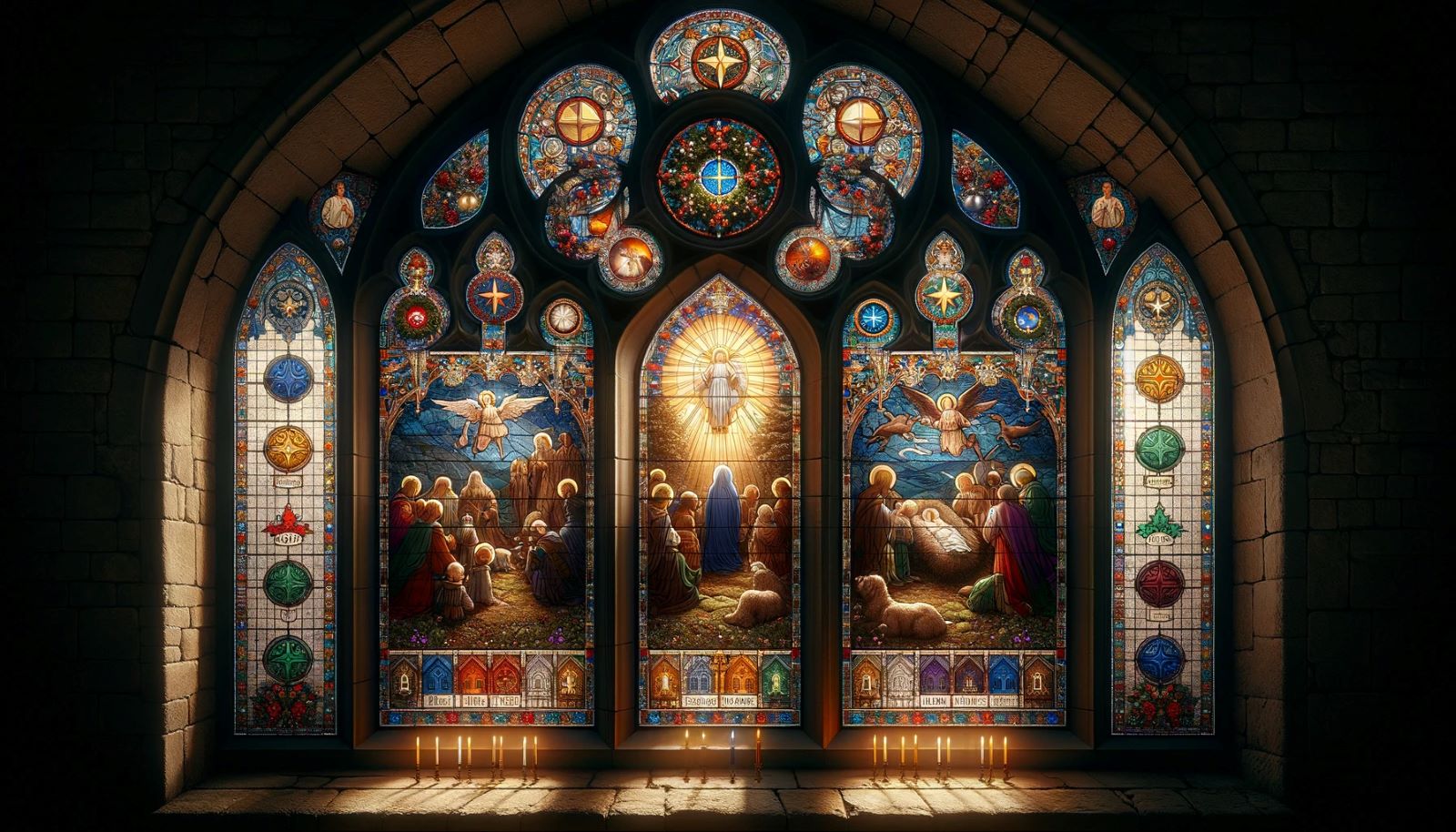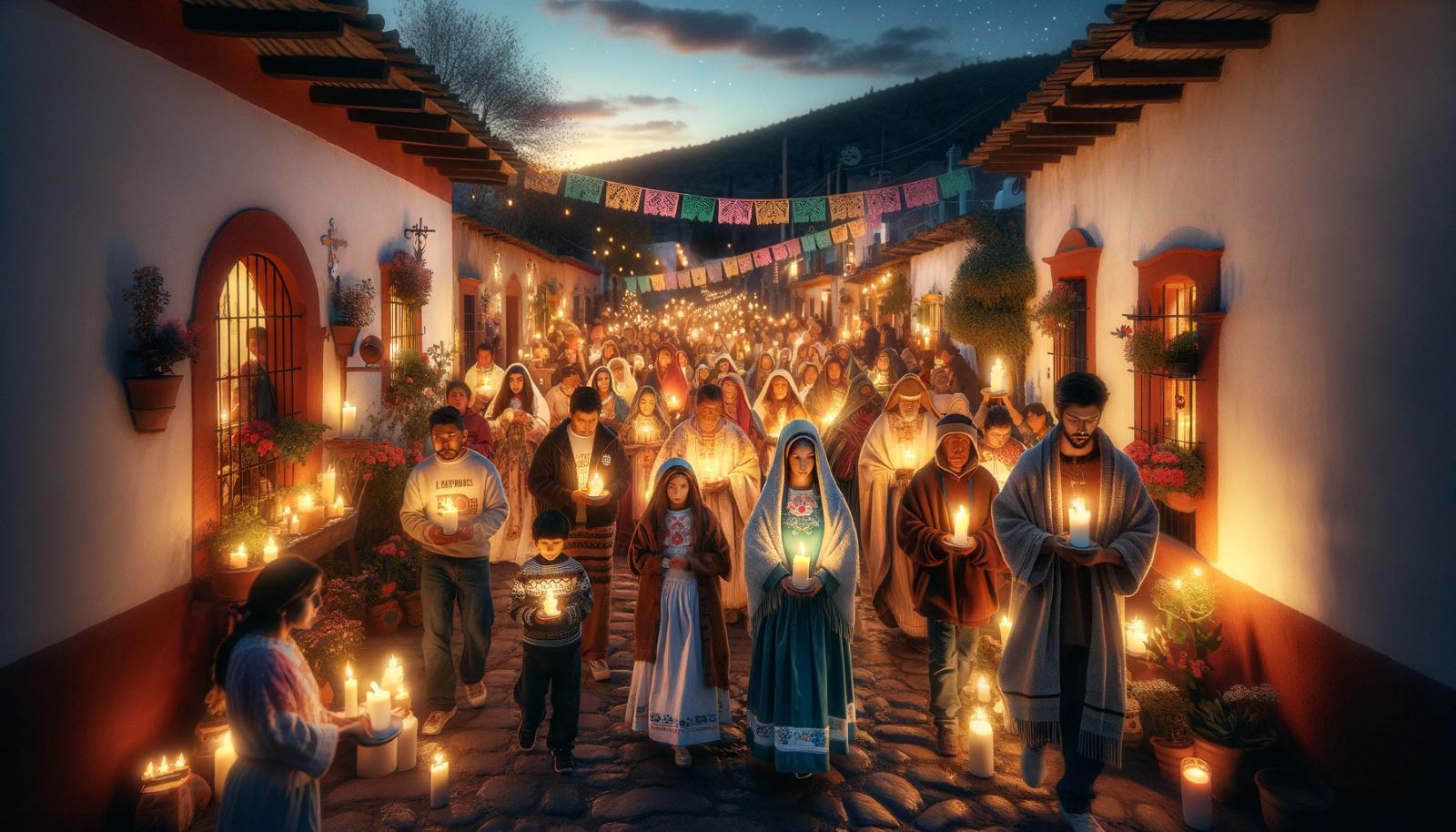Home>Special Themes>What Do We Celebrate On Advent


Special Themes
What Do We Celebrate On Advent
Published: February 14, 2024
Ericka Andersen, an editor at Christian.net, expertly merges digital strategy with content creation, focusing on faith and societal issues. Her communication skills enhance the platform's engaging narratives, fostering meaningful dialogue on belief's impact on society.
Discover the significance of special themes celebrated during Advent and their importance in the Christian faith. Explore the traditions and meaning behind these special observances.
(Many of the links in this article redirect to a specific reviewed product. Your purchase of these products through affiliate links helps to generate commission for Christian.net, at no extra cost. Learn more)
Table of Contents
Introduction
Advent is a time of joyful anticipation and spiritual preparation observed by Christians around the world. As the holiday season approaches, the significance of Advent becomes increasingly prominent in the hearts and minds of believers. This sacred period, which typically begins on the fourth Sunday before Christmas, serves as a meaningful reminder of the profound spiritual journey leading up to the celebration of the birth of Jesus Christ.
During Advent, Christians reflect on the themes of hope, peace, joy, and love, which are symbolized by the lighting of the Advent wreath candles. This time-honored tradition fosters a sense of unity and spiritual connectedness among believers, as they eagerly await the arrival of Christmas Day.
The observance of Advent is not merely a historical or cultural tradition; it is a deeply spiritual and transformative experience that encourages believers to pause, reflect, and rekindle their faith. Through prayer, meditation, and acts of kindness, individuals seek to cultivate a spirit of gratitude and reverence, embracing the true essence of the holiday season.
As we delve into the rich tapestry of Advent, we will explore its profound meaning, delve into its historical roots, unravel the symbolism embedded within its traditions, and shed light on its enduring significance in the Christian faith. Join us on this enlightening journey as we embark on a captivating exploration of Advent and the timeless traditions that continue to inspire and uplift countless hearts around the world.
Read more: Why Do We Celebrate Advent?
The Meaning of Advent
Advent, derived from the Latin word "adventus," meaning "coming" or "arrival," holds profound significance in the Christian faith. It marks the beginning of the liturgical year and serves as a period of spiritual preparation and anticipation leading up to the celebration of the birth of Jesus Christ on Christmas Day. This sacred season typically spans four weeks, commencing on the fourth Sunday before Christmas.
At its core, Advent embodies a sense of hopeful expectation and joyful anticipation. It encapsulates the profound longing for the arrival of the Messiah, as foretold in the scriptures and prophesied by the ancient prophets. The essence of Advent is beautifully encapsulated in the themes of hope, peace, joy, and love, symbolized by the four candles of the Advent wreath.
The first candle, often purple or blue, represents hope and is known as the "Prophet's Candle," signifying the anticipation of the Messiah's coming. The second candle, also purple or blue, symbolizes peace and is referred to as the "Bethlehem Candle," signifying the peace brought by the Prince of Peace. The third candle, pink or rose in color, represents joy and is called the "Shepherd's Candle," signifying the joy the shepherds experienced at the news of Christ's birth. The fourth candle, again purple or blue, symbolizes love and is known as the "Angel's Candle," signifying the love embodied in the message of the angels.
Beyond the symbolism of the candles, Advent invites believers to embark on a spiritual journey of introspection, repentance, and renewal. It serves as a poignant reminder of the humble circumstances surrounding the birth of Jesus, prompting individuals to reflect on the profound humility and grace exemplified by the Savior's arrival in a lowly manger.
Moreover, Advent fosters a spirit of eager anticipation, not only for the commemoration of Christ's birth but also for the promised second coming of Jesus as the triumphant King. This dual focus on the historical incarnation and the future return of Christ infuses Advent with a profound sense of hope and expectancy, inspiring believers to prepare their hearts and lives for the glorious fulfillment of God's redemptive plan.
In essence, Advent encapsulates the essence of the Christian faith, intertwining the historical narrative of Christ's birth with the timeless promise of His return. It serves as a poignant reminder of the enduring hope, peace, joy, and love that radiate from the heart of the Christmas story, inviting believers to embrace these transformative virtues and share them with the world.
As we immerse ourselves in the profound meaning of Advent, we are beckoned to cultivate a spirit of reverence, gratitude, and anticipation, embracing the timeless message of hope and salvation heralded by the birth of Jesus Christ.
The History of Advent
The history of Advent traces its origins to the early centuries of Christianity, evolving from a period of fasting and spiritual preparation into a cherished liturgical season observed by various denominations within the Christian faith. The roots of Advent can be traced back to the practices of early Christians who sought to commemorate the birth of Jesus Christ and prepare their hearts for the celebration of this momentous event.
The earliest recorded observance of Advent can be found in the writings of St. Gregory of Tours, a 6th-century bishop, who described a period of fasting leading up to the Nativity of Christ. Over time, the observance of Advent expanded to encompass a broader emphasis on spiritual reflection, penitence, and joyful anticipation of the Messiah's arrival.
The structure of Advent as a four-week season gradually took shape in the Western Church during the Middle Ages. It was during this period that the themes of hope, peace, joy, and love became intertwined with the observance of Advent, culminating in the widespread adoption of the Advent wreath as a symbolic representation of these profound virtues.
The evolution of Advent as a distinct liturgical season can be attributed to the influence of various historical figures and ecclesiastical developments. Notably, the Council of Tours in 567 A.D. played a pivotal role in formalizing the observance of the "fast before Christmas" as a preparatory period for the Nativity. This early form of Advent fasting laid the groundwork for the spiritual significance that would later become synonymous with the Advent season.
Throughout the centuries, the observance of Advent continued to evolve, with the introduction of liturgical colors, such as purple and rose, to symbolize the themes of penitence and rejoicing. The rich tapestry of Advent traditions, including the lighting of Advent candles, the singing of Advent hymns, and the recitation of special prayers, further enriched the spiritual depth of this sacred season.
In the modern era, Advent remains a cherished time of spiritual reflection and anticipation, uniting believers in a shared journey of faith and preparation for the celebration of Christ's birth. Its historical legacy, rooted in the early practices of the Christian community, continues to inspire reverence, contemplation, and a renewed sense of hope as believers worldwide embark on this timeless pilgrimage through the Advent season.
The Symbols of Advent
The symbols of Advent are deeply rooted in rich tradition and profound spiritual significance, serving as poignant reminders of the themes of hope, peace, joy, and love that define this sacred season. These symbols, which include the Advent wreath, the Advent calendar, and the colors of Advent, encapsulate the timeless essence of the Christian faith and the anticipation of the Messiah's arrival.
The Advent wreath stands as a central symbol of the season, adorned with evergreen foliage and four candles, typically three purple or blue candles and one pink or rose candle. Each candle represents a specific theme, with the first candle symbolizing hope, the second peace, the third joy, and the fourth love. As believers light these candles in succession, the warm glow serves as a visual representation of the increasing anticipation and spiritual illumination that permeate the Advent season.
Another cherished symbol of Advent is the Advent calendar, which traces its origins to 19th-century Germany. This interactive tradition involves counting down the days until Christmas, often through the opening of numbered doors or compartments to reveal small gifts, scriptures, or images. The Advent calendar serves as a delightful and meaningful way to engage children and families in the anticipation of Christ's birth, fostering a sense of excitement and spiritual reflection throughout the season.
The colors of Advent, notably purple and rose, hold profound symbolic significance. Purple, a color traditionally associated with penitence and preparation, is prominently featured in Advent decorations and clergy attire, reflecting the solemnity and introspective nature of the season. The use of rose-colored vestments and candles on the third Sunday of Advent, known as Gaudete Sunday, symbolizes a joyful shift in focus as the anticipation of Christmas intensifies.
In addition to these primary symbols, other elements such as the Nativity scene, the Star of Bethlehem, and the Angel Gabriel are often incorporated into Advent observances, further enriching the spiritual tapestry of the season.
These symbols of Advent serve as poignant reminders of the profound spiritual journey leading up to the celebration of the birth of Jesus Christ. As believers immerse themselves in the timeless traditions and symbolic richness of Advent, they are invited to embrace the transformative virtues of hope, peace, joy, and love, fostering a spirit of reverence and anticipation as they prepare their hearts for the joyous arrival of Christmas.
The Traditions of Advent
The traditions of Advent are steeped in rich symbolism and time-honored practices that unite believers in a shared journey of spiritual preparation and joyful anticipation. These cherished traditions, spanning centuries of Christian observance, serve as poignant reminders of the profound significance of the Advent season and the enduring themes of hope, peace, joy, and love that permeate this sacred time.
One of the central traditions of Advent is the lighting of the Advent wreath, a symbolic ritual that unfolds over the course of the four weeks leading up to Christmas. Each Sunday, believers gather to light a candle on the wreath, accompanied by prayers, hymns, and readings that reflect the thematic focus of the respective candle. This cherished tradition fosters a sense of unity and spiritual connectedness, as families and congregations come together to mark the progression of the season and kindle the warm glow of hope, peace, joy, and love.
The Advent calendar, another beloved tradition, offers a delightful way to engage children and families in the anticipation of Christmas. Whether in the form of a traditional paper calendar with hidden surprises behind each door or a modern digital rendition, the Advent calendar invites participants to count down the days until Christmas, savoring the daily revelations and reflections that accompany each opening. This interactive tradition cultivates a sense of excitement and spiritual contemplation, as individuals of all ages eagerly await the joyous celebration of Christ's birth.
The observance of Advent is also characterized by the singing of Advent hymns and carols, each melody carrying with it the timeless message of hope, peace, joy, and love. These musical expressions serve as a poignant soundtrack to the season, inspiring hearts and lifting spirits as believers immerse themselves in the rich tapestry of Advent's themes and traditions.
Furthermore, the Nativity scene, or creche, holds a prominent place in Advent traditions, serving as a visual representation of the humble circumstances surrounding the birth of Jesus. As families and communities display and contemplate the Nativity scene, they are reminded of the profound humility and grace embodied by the Savior's arrival, fostering a spirit of reverence and gratitude as they prepare their hearts for the joyous arrival of Christmas.
As believers worldwide partake in these cherished traditions, they are invited to embrace the transformative virtues of Advent, cultivating a spirit of reverence, gratitude, and anticipation as they prepare to celebrate the birth of Jesus Christ. These timeless traditions serve as a poignant reminder of the enduring hope and joy that radiate from the heart of the Christmas story, uniting believers in a shared journey of faith and spiritual renewal.
Read more: What Do We Celebrate During Lent?
The Importance of Advent in Christianity
The significance of Advent in Christianity extends far beyond the observance of a traditional season leading up to Christmas. It embodies a profound spiritual journey that resonates deeply with the core tenets of the Christian faith, serving as a poignant reminder of the timeless themes of hope, peace, joy, and love that emanate from the heart of the Christmas story.
At its essence, Advent encapsulates the anticipation of the Messiah's arrival, echoing the prophetic promises and ancient prophecies that foretold the birth of Jesus Christ. This period of expectant waiting not only commemorates the historical incarnation of the Savior but also directs believers' hearts and minds toward the promised second coming of Christ as the triumphant King. Thus, Advent serves as a dual reminder of the past and future fulfillment of God's redemptive plan, fostering a spirit of hope and expectancy within the Christian community.
Moreover, the observance of Advent cultivates a sense of spiritual preparation and introspection, prompting believers to pause and reflect on the profound humility and grace exemplified by the Savior's birth in a lowly manger. It serves as a call to repentance, inviting individuals to examine their lives, realign their priorities, and prepare their hearts to receive the transformative message of the Christmas narrative.
The themes of hope, peace, joy, and love, symbolized by the lighting of the Advent wreath candles, permeate the season with a sense of reverence and anticipation. As believers engage in the timeless traditions and rituals of Advent, they are invited to embrace these transformative virtues, allowing them to permeate their lives and relationships, and to share them with the world.
Furthermore, Advent fosters a spirit of unity and connectedness within the Christian community, as believers worldwide embark on a shared journey of faith and spiritual renewal. The observance of Advent traditions, such as the lighting of the Advent wreath, the singing of hymns, and the display of the Nativity scene, serves to unite families and congregations in a collective expression of reverence and joy, strengthening the bonds of fellowship and communal worship.
In essence, the importance of Advent in Christianity lies in its ability to inspire hearts, renew faith, and foster a spirit of joyful anticipation for the celebration of Christ's birth. It serves as a poignant reminder of the enduring hope and love that radiate from the heart of the Christmas story, inviting believers to embrace these transformative virtues and share them with the world.
As the Advent season unfolds, believers are beckoned to immerse themselves in the profound significance of this sacred time, cultivating a spirit of reverence, gratitude, and anticipation as they prepare to celebrate the birth of Jesus Christ.
Conclusion
In conclusion, the observance of Advent stands as a timeless testament to the enduring significance of the Christmas story within the Christian faith. As believers embark on this sacred journey of spiritual preparation and joyful anticipation, they are beckoned to embrace the transformative virtues of hope, peace, joy, and love that permeate the essence of the Advent season.
Throughout the centuries, the traditions and symbols of Advent have served as poignant reminders of the profound longing for the arrival of the Messiah, as foretold in the scriptures and prophesied by the ancient prophets. The lighting of the Advent wreath candles, the singing of hymns, the display of the Nativity scene, and the observance of Gaudete Sunday collectively weave a rich tapestry of spiritual reflection and communal worship, uniting believers in a shared pilgrimage of faith and reverence.
As we immerse ourselves in the profound meaning of Advent, we are invited to cultivate a spirit of gratitude, anticipation, and renewal, embracing the timeless message of hope and salvation heralded by the birth of Jesus Christ. The observance of Advent not only commemorates the historical incarnation of the Savior but also directs our hearts and minds toward the promised second coming of Christ as the triumphant King, fostering a dual focus on the past and future fulfillment of God's redemptive plan.
Furthermore, the observance of Advent fosters a spirit of unity and connectedness within the Christian community, strengthening the bonds of fellowship and communal worship. As families and congregations gather to mark the progression of the season, the warm glow of the Advent candles serves as a visual representation of the increasing anticipation and spiritual illumination that permeate this sacred time.
In essence, Advent embodies the essence of the Christian faith, intertwining the historical narrative of Christ's birth with the timeless promise of His return. It serves as a poignant reminder of the enduring hope, peace, joy, and love that radiate from the heart of the Christmas story, inviting believers to embrace these transformative virtues and share them with the world.
As the Advent season unfolds, believers are beckoned to immerse themselves in the profound significance of this sacred time, cultivating a spirit of reverence, gratitude, and anticipation as they prepare to celebrate the birth of Jesus Christ.














